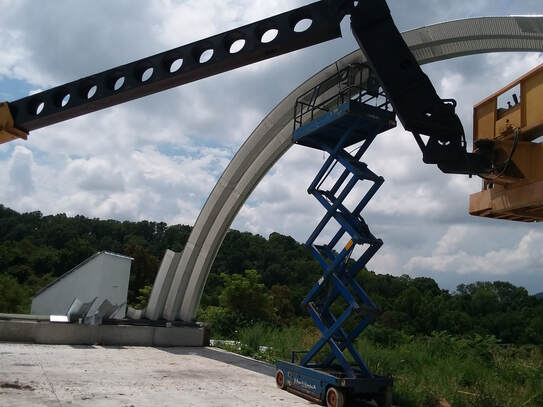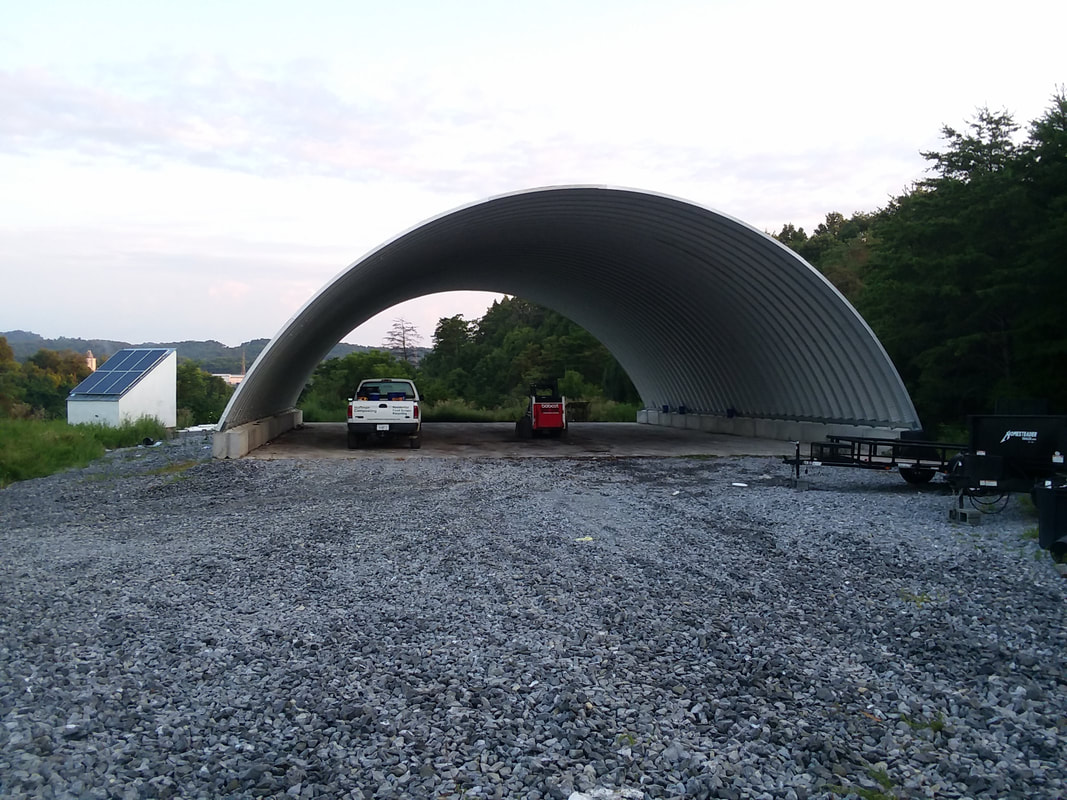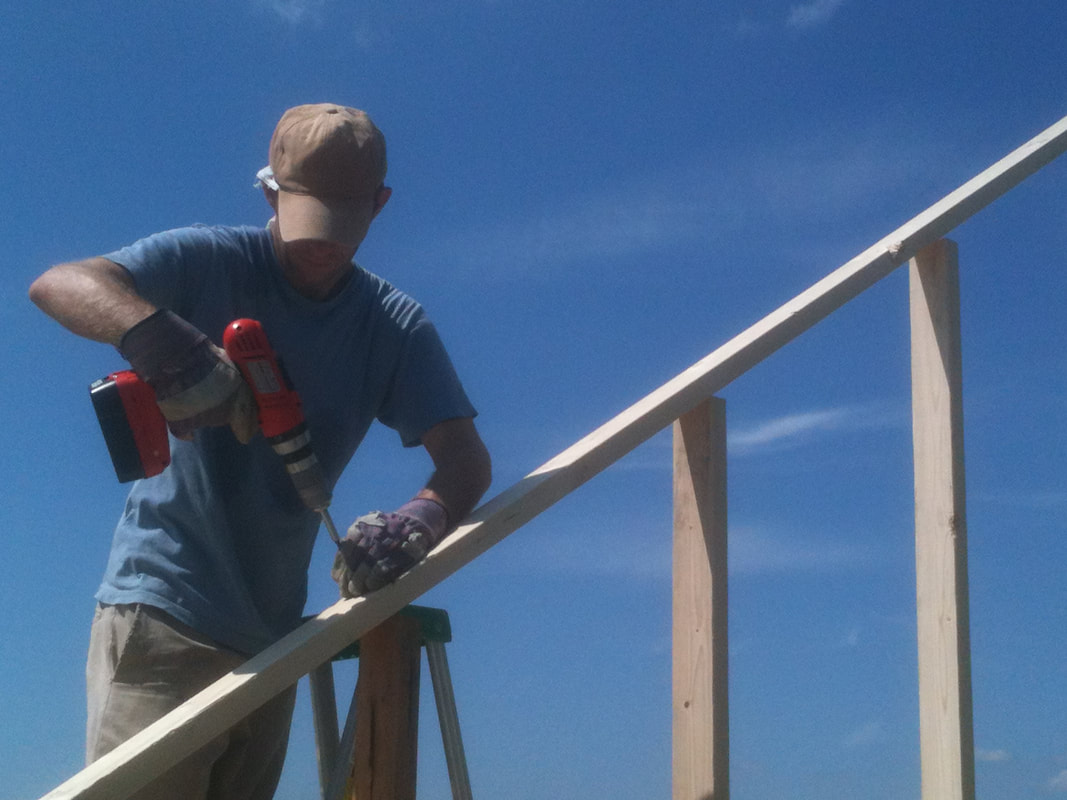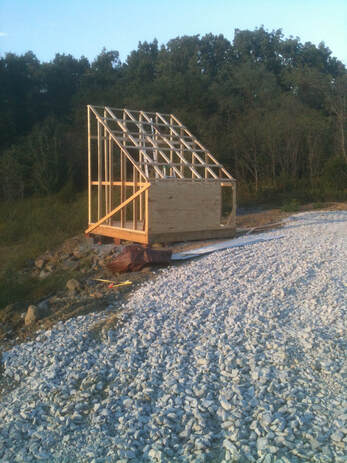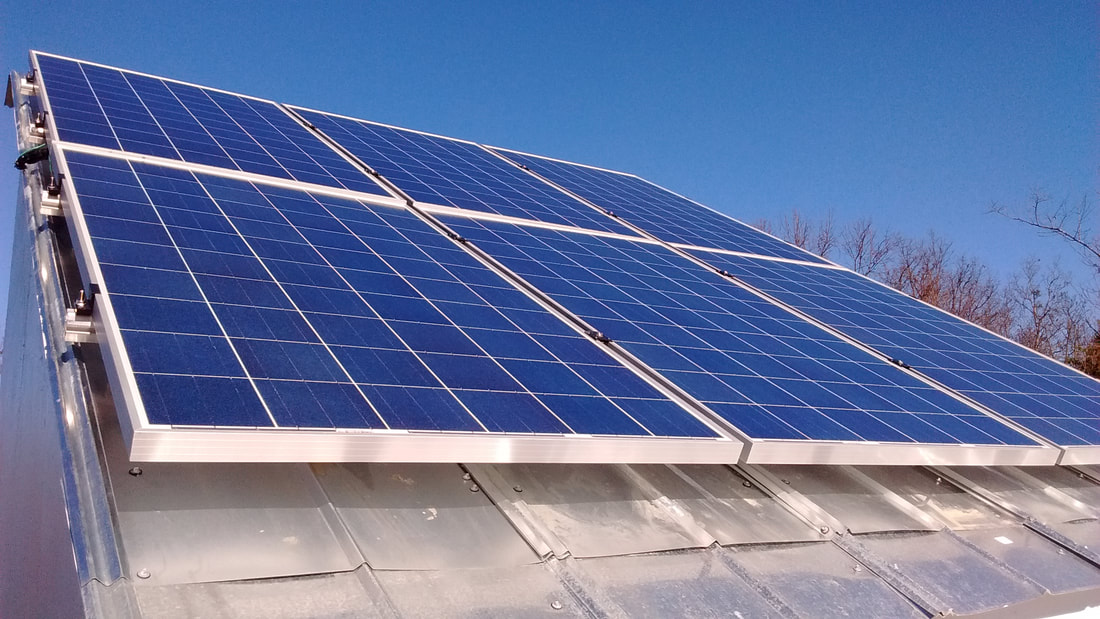|
Read below or click this link to download this guide for free.
|
| ||||||
Once you have chosen the site for your compost business facility, it’s time to prepare it for operation. Think of compost business site preparation in terms of area layout, roads, surfaces, and structures.
Area Layout
The layout of your facility will include areas for bulking agent and high carbon feedstock stockpiling, high nitrogen feedstock reception and mixing, compost processing, curing, and screening and sales.
You want to move material around as little as possible. It’s expensive, time-consuming, and a real pain in bad weather. So place your bulking agent and high carbon feedstock stockpiling area right next to the high nitrogen feedstock reception and mixing area. Have that be next to the processing area, and so on. Unfortunately for me, the bulking agent and high carbon feed stock areas are separate from my initial processing area. However, my curing, screening, and sales areas are all together.
You also want to avoid future traffic crossings and bottlenecks. So, if possible, arrange the areas in an unbroken counterclockwise layout.
You want to move material around as little as possible. It’s expensive, time-consuming, and a real pain in bad weather. So place your bulking agent and high carbon feedstock stockpiling area right next to the high nitrogen feedstock reception and mixing area. Have that be next to the processing area, and so on. Unfortunately for me, the bulking agent and high carbon feed stock areas are separate from my initial processing area. However, my curing, screening, and sales areas are all together.
You also want to avoid future traffic crossings and bottlenecks. So, if possible, arrange the areas in an unbroken counterclockwise layout.
Bulking Agent and High Carbon Feedstock StockpilinG
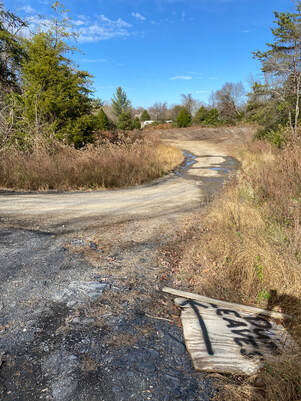
For this area, you need to think about traffic from municipal leaf trucks, tree service trucks, etc. They need to be able to get in and out without getting stuck in soft ground. If there is soil in this area, you’ll want to scrape off the soft topsoil and get down to hard packed subsoil. Putting down rock is an option, but it will get in your feedstocks and be a pain. Firming the surface up with a pug mix is another option.
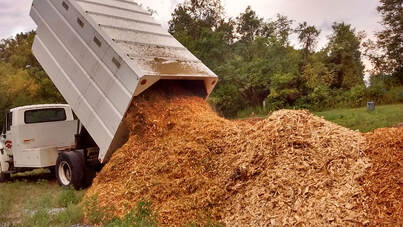
The stockpiling area will need wide entranceways to help these trucks make the turn. You’ll need to provide at least a 30ft wide entrance. The entrance and access to this area needs to be firmed up with 2-inch rock and #57 rock. Shale is even better. It’s best if you don’t put down more than a few inches at a time. Let the trucks push it down into the ground for a while; then add more. To spread rock, you’ll want to rent a track machine (such as a Bobcat T-190). Depending on accessibility, the rock truck may be able to dribble it out to speed up the spreading process. Rock and delivery are expensive!
Size: at least half an acre
Size: at least half an acre
High Nitrogen Feedstock Reception and MixinG
High nitrogen materials (food scraps, manures, etc.) are not to be stockpiled. They must be dealt with right when you get them. The surface for this area must be concrete or asphalt and any excess liquids must be collected to be put through processing. Make sure that the concrete or asphalt is at least 6 inches deep in the middle with sufficient turndowns. Your pickup and skid steer may not be too heavy, but larger trucks and pieces of machinery will eventually need to go on it.
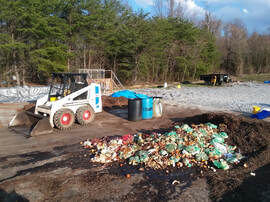
I receive and mix food scraps right on the same concrete pad that I process on. I put down a layer of woodchips and leaves, deposit the food scraps on top of that, cover it with more chips and leaves, and mix.
Size: at least 4,000 sq ft
Compost Processing
Like the high nitrogen reception/mixing area, the processing area needs to have a concrete or asphalt surface and some way for excess liquids to be collected. At my facility, the concrete processing pad has a 2% slope with a trough in the concrete at the lower end that leads to a subterranean tank. It also has 2-foot high concrete waste blocks along the sides. I sealed them to each other and the pad with Sikaflex-1A and mortar.
For a couple years, I survived by covering the entire processing pad with tarps to prevent even a small rain from overwhelming the tank. It was a nightmare! I now have a metal Quonset roof over the pad. I STRONGLY encourage you to work under a roof.
For a couple years, I survived by covering the entire processing pad with tarps to prevent even a small rain from overwhelming the tank. It was a nightmare! I now have a metal Quonset roof over the pad. I STRONGLY encourage you to work under a roof.
Size: at least 5,000 sq ft
Curing
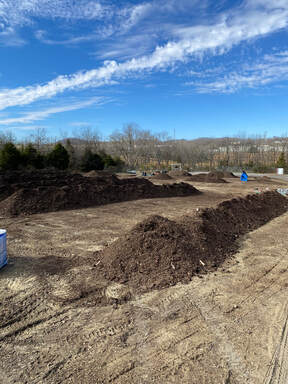
With this area, you have a little more leeway. Depending on your state’s regulations, you may be able to cure on bare ground. I still recommend that you scrape down to the hard packed subsoil. Trying to turn, move, or pick up material off soft ground after it has rained is very inefficient. The whole area becomes a mud pit in no time.
Size: at least half an acre
Screening and Sales
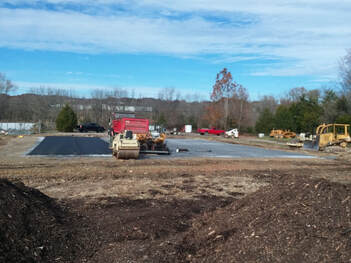
This area can be on bare ground, but it will be much better if you can do it on a concrete or asphalt pad. I did this on bare ground for 3 and a half years. Getting a 70ft by 70ft asphalt pad down cost me $23,000. It was worth every penny.
Size: at least a quarter acre
Roads
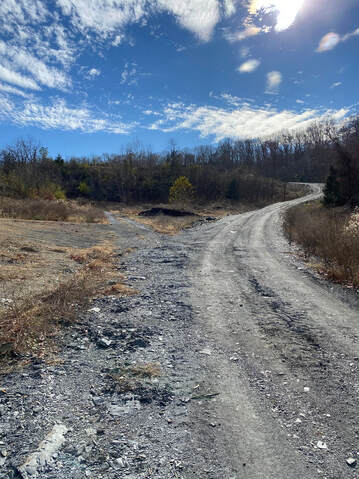
If your site is like mine, you won’t be able to place all your areas right next to each other in a nice counterclockwise arrangement. You’ll need to connect them with roads. Make sure they’re at least 20 ft wide. Put in berms, swales, and trenches with perforated 4″ pipe covered with 17 inches of 2-inch stone to prevent rainwater from running down and softening the roads. Level them the best you can with a skid steer. Put down a couple inches of 2-inch rock. Use the roads for a while. Put down another layer of rock. Repeat. When the roads are firm even in a good rain, put down an inch layer of #57 rock. Again, shale is even better.
Power and Water
You’ll need power and water. I collect rainwater for washing, wetting the material, etc. For power, I have an off-grid photovoltaic system. Nowadays, there is a bewildering array of options for green energy. You’ll also want a decent-sized portable generator.
Structures
Buildings are expensive and often require more regulatory processes. Luckily for us, our kind of business does not necessitate much in the way of structures. You can start off with just these:
- an old shipping container to keep your tools, equipment, and skid steer safe from thieves
- a roof over your processing area
- maybe shed for a photovoltaic panel array, batteries, etc.
That’s it. More structures may be handy. You’ll doubtless build them as you grow. But that’s all you need to get started.
What about an office? That’s what your truck and residence are for!
What about an office? That’s what your truck and residence are for!
